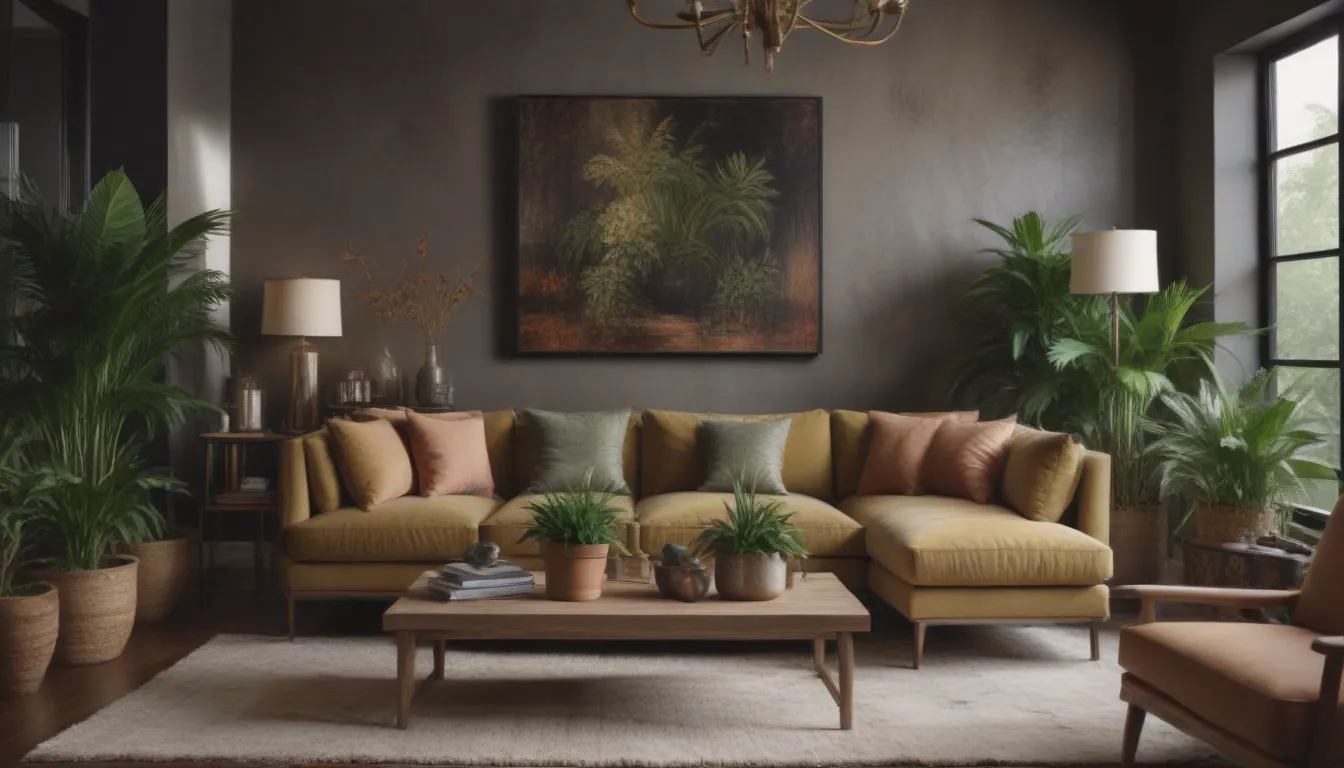Elevate Your Living Room Decor with Expert Plant Arrangement Tips

When it comes to creating a well-designed living room, plants play a vital role in adding a touch of nature and enhancing the ambiance. Whether you have a vast collection of houseplants or just a few green friends, knowing how to arrange them properly can make a significant difference in the overall look and feel of your living space. In this comprehensive guide, we’ll explore expert tips on how to arrange plants in your living room like a pro to create a welcoming and harmonious environment.
The Power of Clustering: Embracing the Rule of Three
One of the key principles in arranging plants in your living room is to keep them in clusters, following the “rule of three.” This popular design technique suggests that grouping plants in odd numbers, such as threes, creates a visually appealing and harmonious arrangement. When plants are clustered together, they make a more significant impact and create a cohesive look in the space.
- Grouping in Threes: Avoid sparse arrangements by grouping plants in threes.
- Varying Heights: Choose plants of different heights to add dimension to your display.
- Unifying Element: Look for a common element, such as color or texture, to tie the cluster together.
- Care Requirements: Group plants with similar care needs to ensure they thrive together.
By embracing the rule of three, you can create a stunning display that captures the eye and enhances the overall aesthetic of your living room.
Adding Depth and Balance: Experimenting with Texture, Size, and Shape
Texture plays a crucial role in interior design, and plants can add an extra layer of depth and interest to your living room. Experimenting with different foliage textures, sizes, and shapes can help balance out the overall look of the space and prevent it from appearing one-dimensional.
- Boho Style: Simple foliage plants work well in boho-style living rooms with layered textures.
- Minimalist Decor: Elaborate plants like cacti, ferns, and monsteras can serve as focal points in minimalist spaces.
- Contrasting Textures: Combine plants with contrasting textures for a dynamic display.
- Visual Weight: Plants with fine, feathery foliage can be grouped in higher numbers for greater impact.
By incorporating a variety of textures, sizes, and shapes in your plant arrangements, you can create a visually compelling and balanced living room that reflects your unique style.
Embracing Color Variations: Adding Interest with Different Hues
When selecting plants for your living room, consider choosing varieties with different shades of green and other colors to add visual interest to the space. Avoid matching plants and pots too closely, and instead opt for a mix of hues that complement each other and the overall decor of the room.
- Color Selection: Choose plants with varying shades of green and other colors to add vibrancy.
- Contrasting Hues: Select plants with hues that contrast with your wall color for an eye-catching display.
- Variegated Species: Consider plants with interesting variegation patterns for added visual appeal.
By incorporating plants with diverse colors and textures, you can create a lively and engaging environment that reflects your personal style and enhances the atmosphere of your living room.
Creating Visual Flow: Using Plants to Guide the Eye
Plants can be used strategically to create visual flow and guide the eye throughout your living room. Consider the growth habits of the plants you choose and how they can lead the viewer’s gaze to different focal points in the space.
- Trailing Plants: Use trailing or vining plants in hanging baskets to create a cascading effect and draw the eye upward.
- Height Variation: Position tall plants with erect foliage to guide the eye upward and create a sense of verticality.
- Room Dividers: Use plants to create natural room dividers and define separate areas within the living room.
By strategically placing plants with varying heights and growth patterns, you can effectively direct the flow of movement in your living room and highlight key design elements.
Utilizing Floor Space: Maximizing Impact with Tall Plants
Don’t limit your plant arrangements to tabletops and shelves—consider incorporating tall plants on the floor to make a bold statement in your living room. Tall plants like the fiddle leaf fig or Monstera deliciosa can fill empty corners and serve as natural room dividers, adding visual interest and depth to the space.
- Floor Placement: Place tall plants in corners or near windows to maximize their impact.
- Room Dividers: Use tall plants to create visual separation and define different areas within the living room.
- Spacing: Ensure plants are positioned to allow for airflow and prevent overcrowding.
By strategically placing tall plants on the floor, you can make use of underutilized space in your living room and create a striking focal point that enhances the overall decor.
Tailoring Plants to Your Space: Considering Light and Environment
Before selecting plants for your living room, take into account the natural light levels and environmental conditions of the space. Choose plants that thrive in the specific lighting conditions of each area, and group them together based on their light and moisture requirements for optimal growth.
- Light Levels: Place plants according to their light preferences, such as low-light or bright indirect light.
- Environmental Conditions: Consider factors like humidity and temperature when selecting plants for different areas of the living room.
- Grouping Strategies: Cluster plants with similar care needs together to ensure they receive the appropriate levels of light and moisture.
By selecting plants that are well-suited to your living room environment, you can create a thriving indoor garden that enhances the atmosphere of the space and brings a sense of vitality and freshness to your decor.
Elevate Your Living Room with Expert Plant Arrangement
In conclusion, arranging plants in your living room is not just about adding greenery—it’s about creating a cohesive and visually appealing space that reflects your personal style and enhances the ambiance of the room. By following these expert tips and incorporating a variety of plants with different textures, sizes, shapes, and colors, you can transform your living room into a thriving indoor garden that brings joy and vibrancy to your daily life.
Experiment with clustering plants in groups of three, play with contrasting textures and colors, and use plants to guide the eye and define different areas within the room. By tailoring your plant selection to the specific lighting and environmental conditions of each space, you can create a harmonious and inviting living room that is both functional and beautiful.
With a little creativity and attention to detail, you can arrange plants in your living room like a pro and elevate your decor to new heights. So go ahead, unleash your inner plant enthusiast, and transform your living room into a green oasis that inspires and delights every time you step inside.





